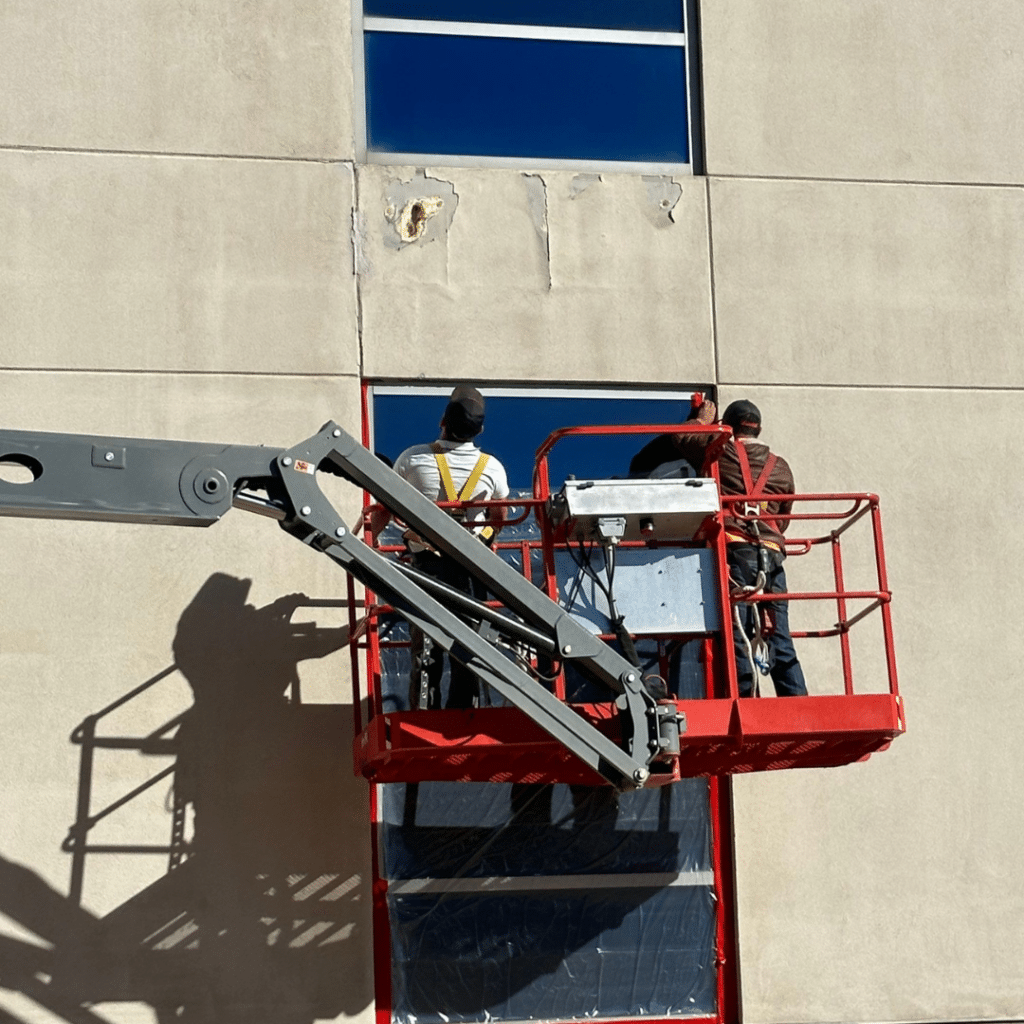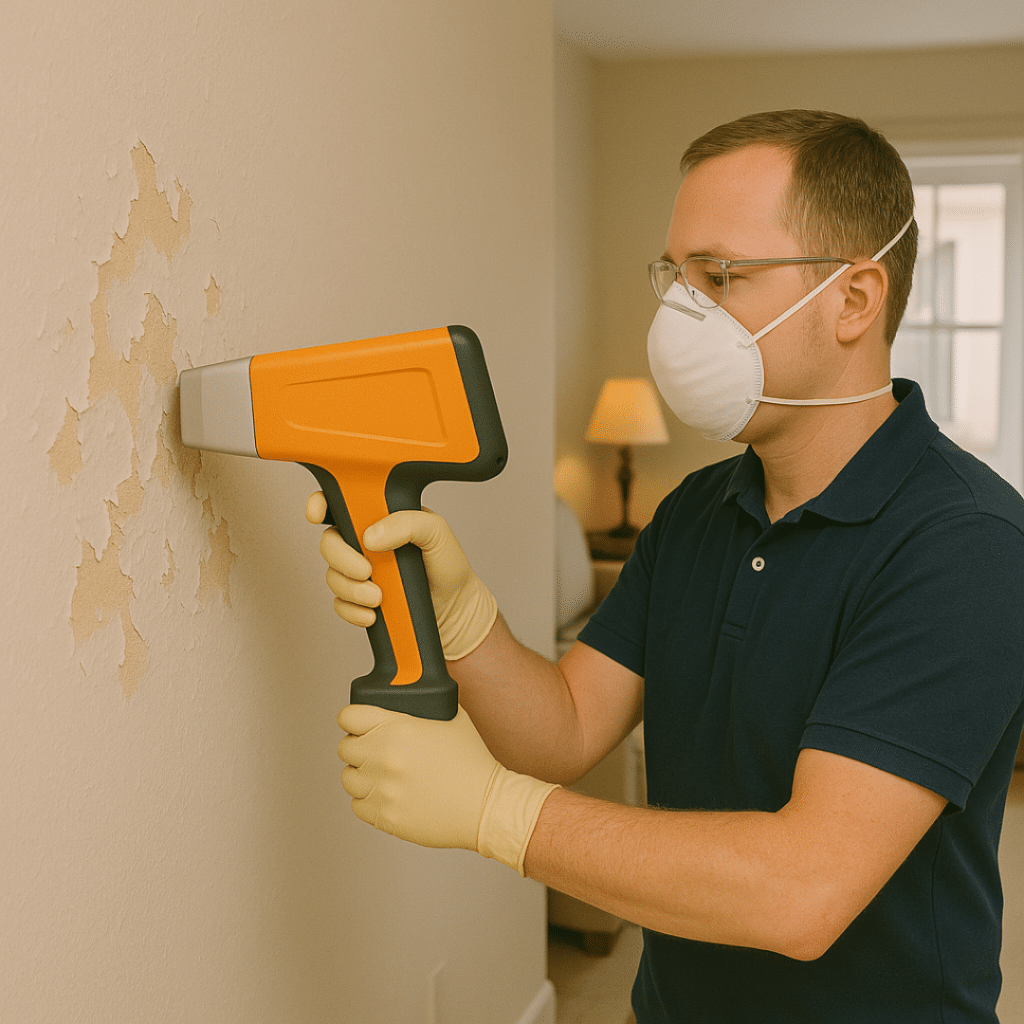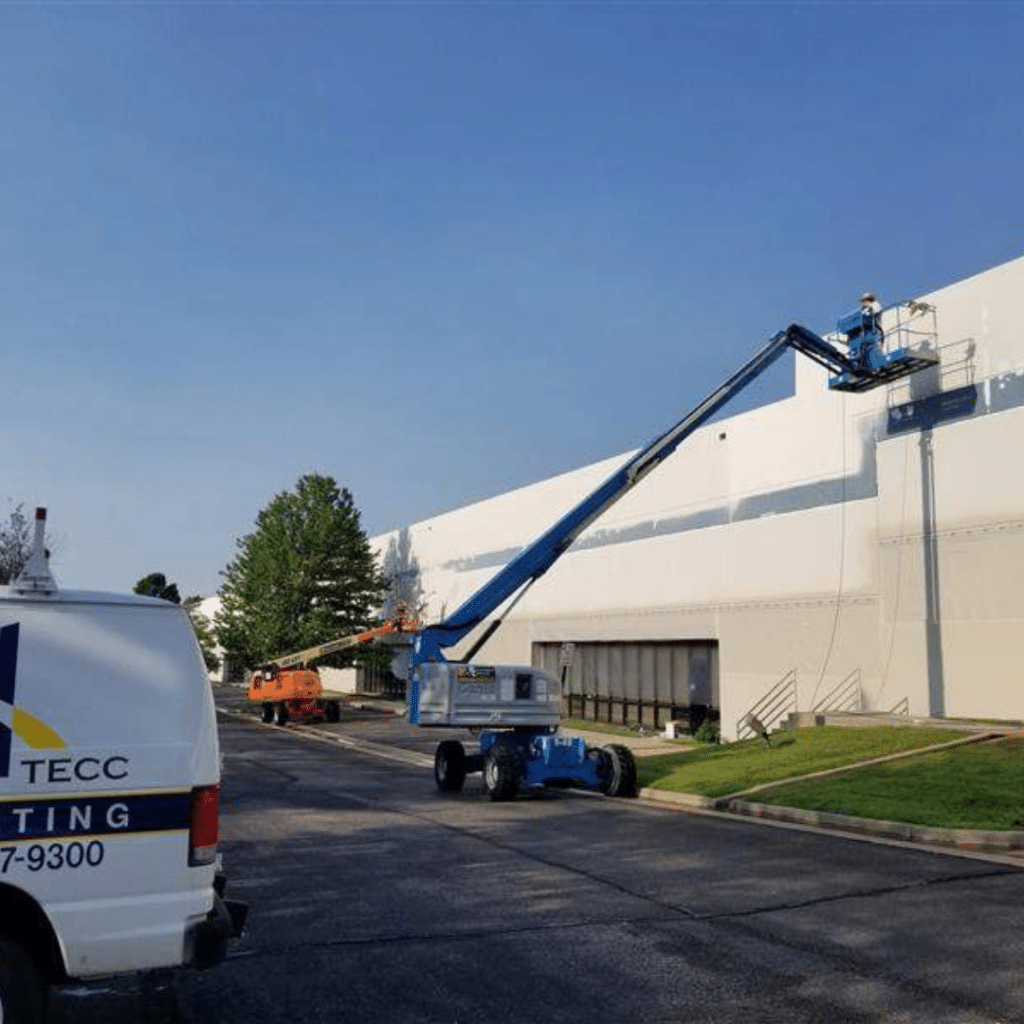Choosing the right paint for your commercial property is about more than aesthetics—it’s about creating a healthier and more sustainable environment. Low VOC Commercial Paints in Colorado for healthy indoor air quality offer a smart solution to meet these goals while aligning with eco-conscious business practices.
Low VOC commercial paints in Colorado for healthy indoor air quality provide three key benefits: they reduce harmful emissions and improve indoor air quality; they support environmental sustainability by emitting fewer volatile organic compounds; and they help create a safer, healthier workspace for employees and customers.
Table of Contents:
- Why Indoor Air Quality Matters for Colorado Businesses
- What Are Low VOC Commercial Paints?
- Benefits of Low VOC Commercial Paints in Colorado for Healthy Indoor Air Quality
- How to Choose the Right Low VOC Commercial Paints in Colorado
- Maintaining Low VOC Painted Surfaces for Long-Lasting Results
- Take the Next Step Toward a Healthier, Sustainable Workspace
Key Takeaway:
- Investing in indoor air quality with low VOC paints supports both employee well-being and a brand’s reputation as a health-conscious business.
- Low VOC paints deliver professional aesthetics without compromising air quality, meeting both regulatory and environmental standards.
- Low VOC paints are an eco-friendly and health-conscious choice, providing aesthetic, functional, and sustainable value to commercial properties.
- Choosing the right low VOC paint requires careful evaluation of durability, aesthetics, and VOC ratings to maximize benefits.
- A proactive maintenance plan ensures your investment in low VOC paints delivers value and durability over time.
By selecting low VOC paints, you’re investing in both your facility’s appearance and the well-being of everyone inside it. Keep reading to explore how these innovative solutions align with your business values and operational goals.
Why Indoor Air Quality Matters for Colorado Businesses
Indoor air quality has a profound effect on employee productivity, customer satisfaction, and overall health. According to the U.S. EPA, indoor air can be up to five times more polluted than outdoor air due to factors like emissions from building materials, cleaning products, and paints. For commercial businesses in Colorado, where environmental consciousness is a priority, improving indoor air quality is an essential step toward meeting sustainability goals.
Low VOC commercial paints in Colorado play a critical role in reducing airborne pollutants, making them ideal for businesses that value health and safety. Improved air quality has also been linked to higher employee performance, with studies showing a 6-9% boost in productivity when air quality is optimized.
What Are Low VOC Commercial Paints?
Low VOC paints are specially formulated with fewer volatile organic compounds, which are chemicals that release harmful gases into the air as paint dries. Traditional paints can emit these compounds for years, negatively affecting indoor air quality. Low VOC commercial paints significantly reduce this risk, aligning with modern health and environmental standards, making them ideal for interior updates in commercial painting projects.
Low VOC paints meet stringent requirements set by organizations like the Green Seal and LEED (Leadership in Energy and Environmental Design). Businesses across Colorado increasingly turn to these eco-friendly solutions to comply with regulations and reduce their carbon footprint.
Benefits of Low VOC Commercial Paints in Colorado for Healthy Indoor Air Quality
The advantages of Low VOC commercial paints in Colorado go far beyond environmental impact, making them a valuable choice for businesses prioritizing health and sustainability.
- Enhanced Air Quality: These paints release fewer harmful emissions, creating healthier indoor environments for employees and customers while reducing pollutants that compromise air quality.
- Sustainability: Low VOC paints help minimize your business’s environmental footprint and support eco-friendly certifications, enhancing your brand’s reputation as environmentally responsible.
- Health and Safety: By reducing exposure to hazardous chemicals, low VOC paints create safer workspaces that protect the well-being of everyone who enters your facility.
By adopting these solutions for interior painting, businesses can create productive, sustainable environments while showcasing their commitment to health and environmental stewardship.
How to Choose the Right Low VOC Commercial Paints in Colorado
Selecting the best low VOC commercial paints in Colorado involves more than just checking a label. Here are some key factors to consider:
- Durability: Look for paints designed to withstand wear and tear in high-traffic areas.
- Color Retention: Opt for brands with a proven track record for lasting color and minimal fading.
- Professional Expertise: Partner with skilled painters experienced in low VOC applications to ensure a flawless finish.
It’s also crucial to check VOC ratings. Paints labeled “low VOC” must meet specific criteria, with emissions typically under 50 grams per liter. Businesses should consult with professionals to align their choices with both functional needs and environmental goals.
Maintaining Low VOC Painted Surfaces for Long-Lasting Results
After investing in Low VOC commercial paints in Colorado, maintaining their integrity is essential to preserving their benefits. Proper care not only extends the paint’s longevity but also sustains its eco-friendly properties, ensuring healthier indoor environments over time.
- Regular Cleaning: Use mild, VOC-compliant cleaning products to avoid damaging the paint finish and maintain air quality standards.
- Touch-Ups: Schedule routine inspections and touch-ups to address scuffs or chips, particularly in high-traffic areas, ensuring a consistent and professional appearance.
- Preventive Measures: Install protective elements like corner guards or furniture pads to minimize wear and tear, reducing the need for frequent repainting.
By maintaining Low VOC commercial paints in Colorado, businesses can maximize their investment while upholding sustainability and health-focused goals.
Take the Next Step Toward a Healthier, Sustainable Workspace
Low VOC commercial paints in Colorado for healthy indoor air quality is a forward-thinking solution for businesses prioritizing health, sustainability, and professionalism. By improving air quality, supporting environmental goals, and enhancing workplace safety, low VOC paints align with the needs of modern Colorado businesses. Whether you’re upgrading a single location or managing a multi-facility refresh, adopting low VOC paints is a step toward a healthier, more sustainable future. Partnering with professionals ensures you maximize the benefits while maintaining a polished, durable finish.
Discover how low VOC commercial paints can transform your business environment into a healthier, eco-friendly space that aligns with your professional goals. Contact TECC Painting today to get a quote tailored to your Colorado facility’s needs.
FAQs
What types of businesses benefit most from using low VOC commercial paints?
Low VOC commercial paints are ideal for any business that values health, sustainability, and compliance with environmental standards. They are particularly beneficial for industries like healthcare, education, hospitality, and retail, where maintaining high indoor air quality is essential for employees and visitors.
Do low VOC paints take longer to dry compared to traditional paints?
Low VOC paints generally have comparable drying times to traditional paints. However, drying conditions like ventilation, humidity, and temperature can affect the process. Proper airflow during and after painting helps ensure quicker drying and reduces any lingering odors.
Are low VOC paints more expensive than traditional paints?
Low VOC paints may have a slightly higher upfront cost compared to traditional paints, but they offer long-term savings. By improving air quality and reducing harmful emissions, they contribute to healthier indoor environments, potentially lowering employee sick days and operational disruptions over time.








